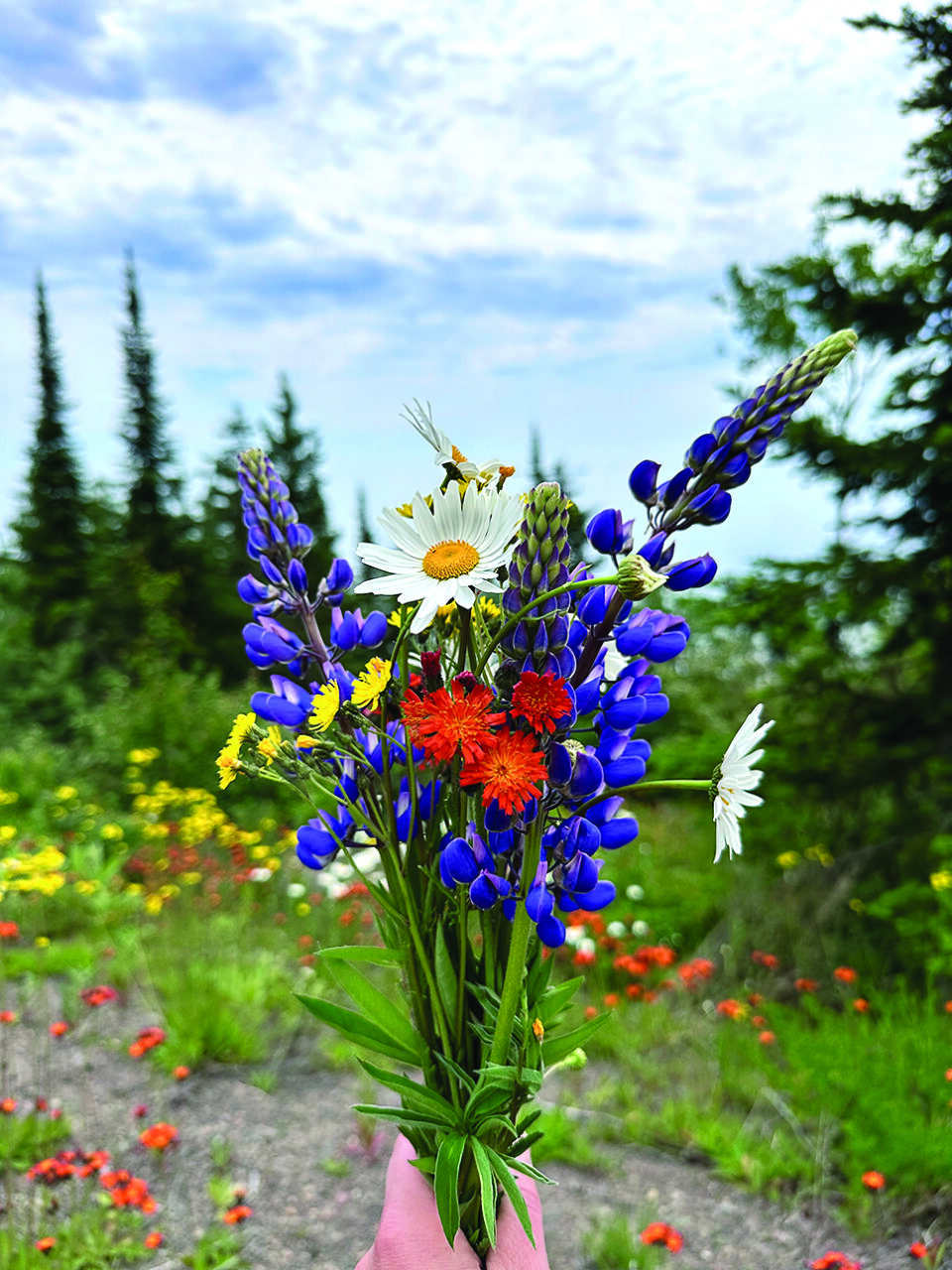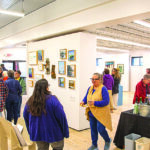I first began working with natural dyes about six years ago. There was a large teaching garden at the educational farm where I worked at the time, and a portion of it was dedicated to dyeing flowers, some native to Minnesota, others introduced cultivars (Japanese Indigo) that grew well in that zone. Almost immediately, I was hooked. From that first encounter, I began experimenting with various dye sources, many of them exotic plant extracts I’d purchased in my excitement as I was first starting out.
This initial phase was illuminating for me in many ways—honing my skills as a dyer was just the beginning, and as I gained more experience and confidence in my skills, it still felt like something was missing. Recognizing that I was missing what drew me into this world at first, I began shifting my focus to look more closely at the landscape around me, seeking out local plants that could be used as dye sources. Ranging from alder and spruce cones, to birch bark and rudbeckia, the list was seemingly endless.
This past year, coming into the Artisan Development Program at North House Folk School in Grand Marais, one of my big goals was to create a color map of natural dyes of the North Shore. Initially, I wanted to continue focusing on using pigments from foraged native species or ones I grew myself. I’d even spent a fair amount of time in the last few years mentally mapping out favorite patches and locations of plants I wanted to visit or revisit for their color potential.
After much deliberation and with some resolve, I decided to widen my net, using what I could, based on what was currently blooming. This included invasive and non-native species—what better way to pull some weeds and prevent them from going to seed?

It’s no secret that there are many negative connotations associated with invasive and non-native species. It’s with good reason. Invasive and non-native species often outcompete native species and often have significant environmental and economic impacts to surrounding ecosystems, and in some cases, human health.
My own relationship with invasives and non-natives has been a long and winding road. I spent my first couple years out of college working on various trail, conservation, and restoration projects throughout northern Minnesota and in New Hampshire, where much of the work consisted of invasive species management, either by chemical means or through hand-pulling. To say I had a one-sided view of non-natives would be an understatement.
It’s only in the last few years that I’ve found my relationship with invasive species shifting. What first began as a crusade of intense management and misunderstanding led to a path toward recognition and a renewed sense of wonder. This softened outlook came about first from simply accepting that whether or not I liked it, invasive species were fast becoming a new normal on the landscape around me.
The next step came in taking the time to learn more about the natural history and context of the invasives around me—what they were used for, and did that play a part in their introduction (if it was purposefully introduced)? For instance, though tansy is quite noxious in our North Shore environment, it was commonly used as a companion plant in gardens to deter pests, for its culinary and medicinal qualities, and by traditional dyers for the deep, golden yellow hues it produced on wool and linen. The same can be said of lupine.

Finally, as I fell deeper and deeper into the world of natural dyes, I began seeing plants in a new light, first for their dye potential. Their status of native vs non-native was secondary, but ultimately influenced how much and where I gathered them. In most circumstances, I will always advocate for and choose a native species over a non-native, but I’d be remiss in denying the vibrant colors that lupine, tansy, or orange hawkweed give off.
Experimenting with and incorporating non-native species in my dye practice has been a unique learning opportunity for many reasons. First and foremost, it has broadened my dye sources and has been a creative way to repurpose and re-shape the narrative around invasives and non-natives. Not to mention, there are no feelings of guilt at how much I’m able to collect at a time. The biggest takeaway for me, however, was that in choosing to use invasive species, seeing them the way I do now versus more than 10 years ago, I’m continually reminded of how time and a little reflection can combine to shift our perspectives into a new way of thinking.
Liz O’Brien is a textile artist in the Artisan Development Program at North House Folk School in Grand Marais, where traditional craft is taught on the shore of Lake Superior.




